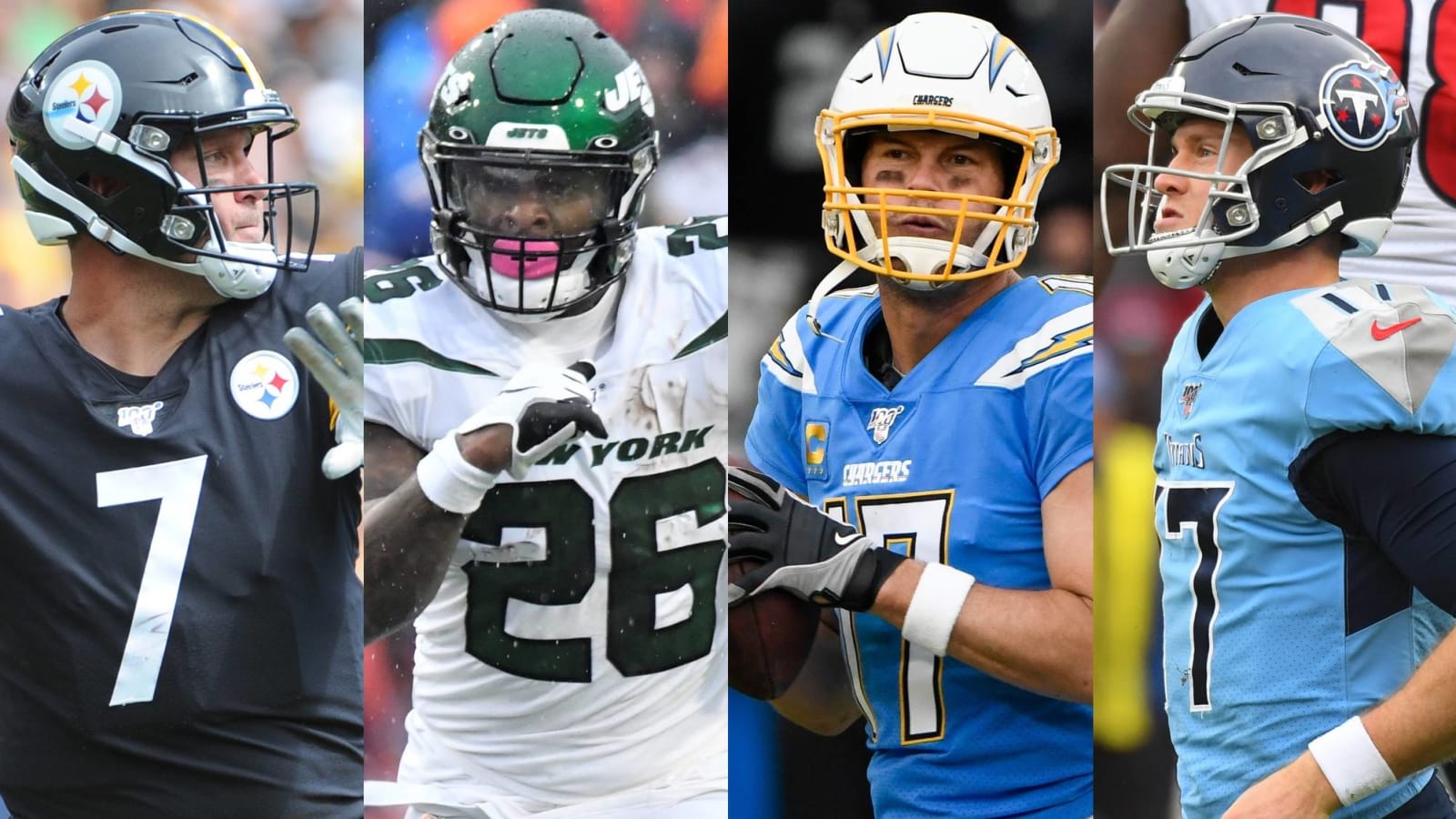
AFC team-by-team roster ratings, analysis, needs
In the AFC, contenders and non-contenders face an assortment of major decisions. Here are the key roster issues facing the 16 teams in the conference. Roster rating is based on players under contract for 2020.
ROSTER RATINGS:
8-10: In great shape short and long term.
6-7: On path to assembling top-caliber roster.
4-5: Some promise, but major questions exist.
1-3: Widespread improvement needed.
NOTE: Project cap space per OverTheCap.com.
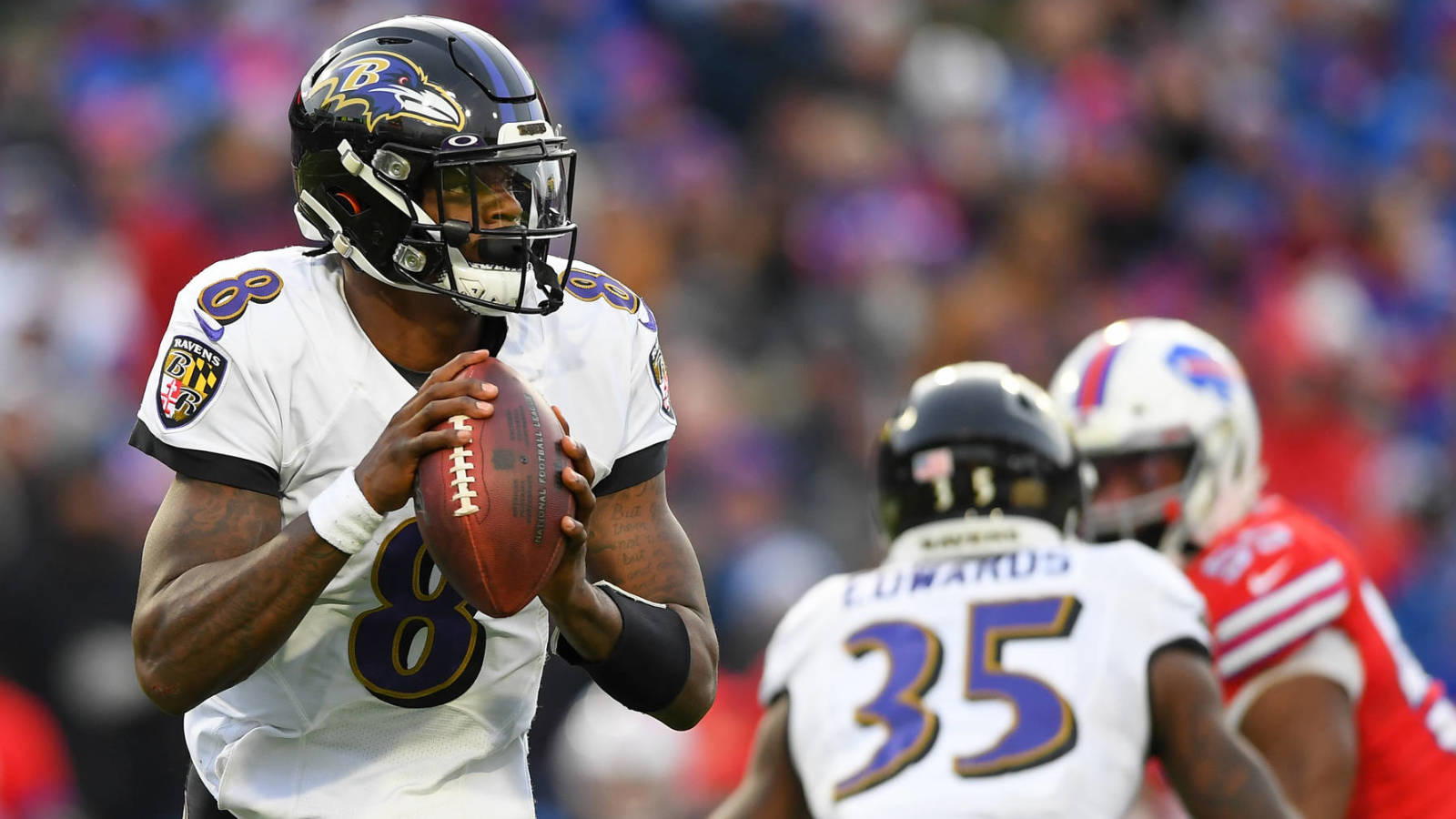
Baltimore Ravens (14-2) | Roster rating: 8
TOP NEEDS: Edge defender, cornerback
ROSTER ANALYSIS: Potentially the next AFC power, the Ravens enter the 2020s with unique possibilities. Baltimore’s Lamar Jackson investment has worked out marvelously, enabling the franchise -– which will be free of Joe Flacco dead money in 2020 –- to build around a rookie quarterback contract. The Ravens may see yet another outside linebacker defect in free agency, but their extension of CB Marcus Peters opens the door for a Matt Judon franchise tag. The latest Raven edge rusher to thrive in a contract year, Judon registered 9.5 sacks and a Ravens-record 33 quarterback hits. The $16.5 million-per-year deal the Packers gave Za’Darius Smith can safely be used as Judon’s floor, and the Ravens have opted for compensatory picks instead of paying huge prices in free agency. A Judon tag would cost Baltimore approximately $16 million, and the team could use a Judon sidekick even if he is retained. Nose tackle starter Michael Pierce and inside linebacker Patrick Onwuasor are also free agents-to-be. Losing both would hurt the Ravens’ interior defense. The Ravens also could use another talent at wide receiver. While their run-oriented offense does not require as much from wideouts as most teams do, the Ravens only saw one wideout (first-rounder Marquise Brown) eclipse 350 yards. Baltimore will face key decisions, but the franchise resides in stunningly better shape than it did exiting last season.
PROJECTED 2020 CAP SPACE: $51.5 million
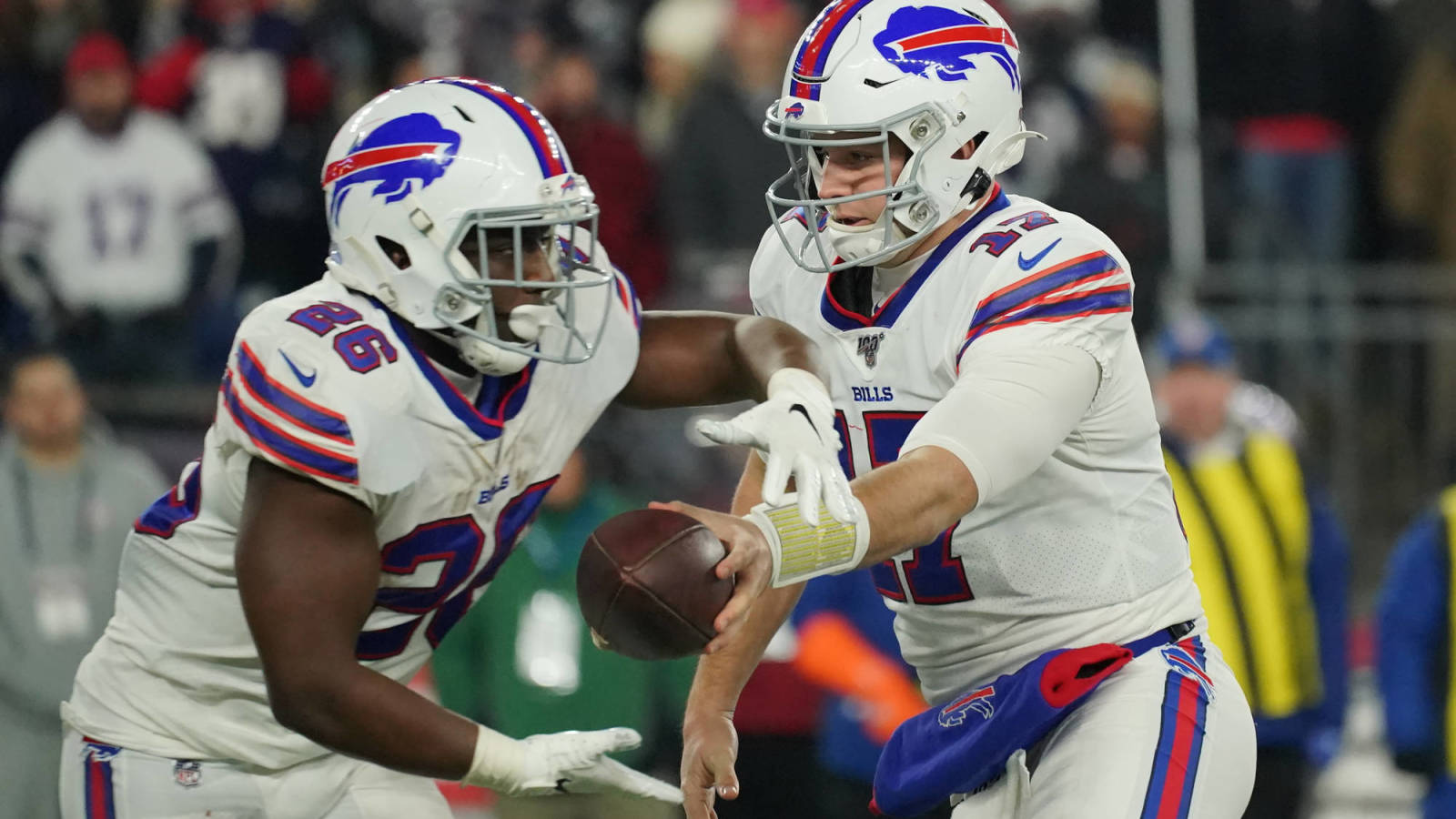
Buffalo Bills (10-6) | Roster rating: 7
TOP NEEDS: Edge defender, wide receiver
ROSTER ANALYSIS: Having advanced their rebuild to the playoffs, the Bills reside on the cusp of 2020 championship contention. Their 2019 offensive line fortifications have helped tremendously, and Devin Singletary looks like Buffalo’s running back of the future. Offensively, the Bills will likely look to the draft to add a wide receiver. The Bills did well in adding John Brown and Cole Beasley, coaxing nearly 2,000 combined receiving yards from their starters. But both will be north of 30 in 2020 and combine for over $16 million on the Bills’ 2020 cap sheet. Buffalo needs to investigate the draft’s high-end wideout crop. The Bills’ previous regime drafted Shaq Lawson, but he has become a key contributor in his contract year. The 2016 first-rounder has outperformed the current front office’s defensive end signing, Trent Murphy. Funding exists to re-sign Lawson and replace Murphy with another free agent on a strong edge defender market. Be it through the draft or free agency, identifying another edge rusher takes on more importance with longtime D-end Jerry Hughes turning 32 next year. This will be a critical offseason for the Bills, who have assembled their best roster since the late 1990s and can continue spending to fortify it around QB Josh Allen’s cost-controlled contract.
PROJECTED 2020 CAP SPACE: $88.5 million
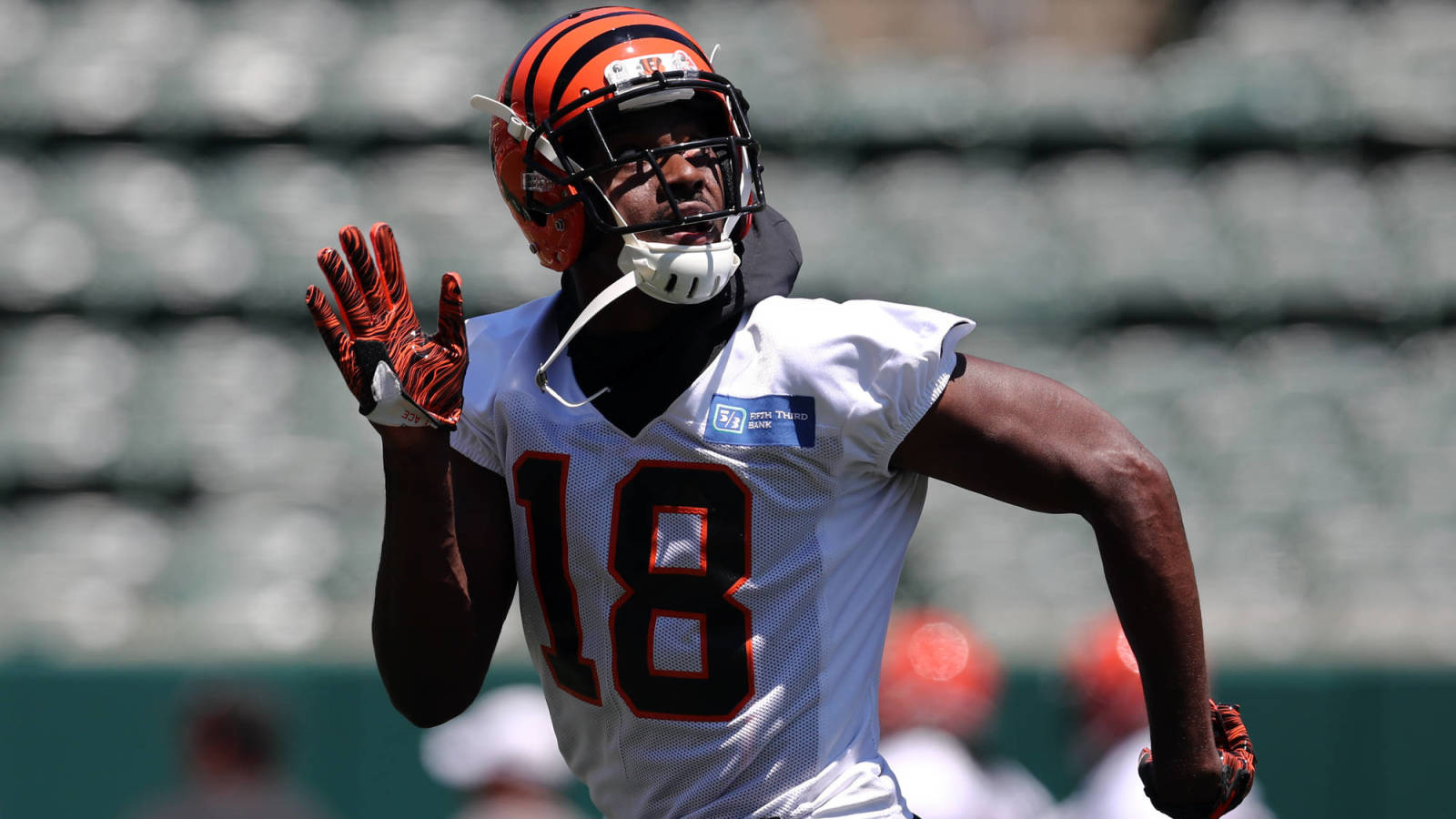
Cincinnati Bengals (2-14) | Roster rating: 3
TOP NEEDS: Quarterback, offensive line, linebacker
ROSTER ANALYSIS: Unlike the Dolphins, who are using one of the worst starting lineups in modern NFL history, the Bengals have several veterans in key spots. They still clinched the No. 1 overall pick, which will likely become Heisman Trophy recipient Joe Burrow. The Ohio native, who hovered off first-round radars prior to his 2019 dominance, would be tasked with leading a moribund franchise to prominence. The Bengals are headed toward a potentially messy divorce with WR A.J. Green, who understandably does not want to be franchise-tagged going into his age-32 season, and need help on their offensive line. After deploying Football Outsiders’ fifth-worst line, the Bengals have left tackle covered in 2020 -– when first-rounder Jonah Williams debuts -– and extended center Trey Hopkins. But needs exist just about everywhere else up front, especially considering Cincinnati’s 2018 first-round investment in center Billy Price has not worked out. The Bengals are not known as big spenders for outside help in free agency, but this line would not put Burrow in position to succeed. Twenty-eighth in both pass- and run-defense DVOA, the Bengals still have defensive line cornerstones Geno Atkins and Carlos Dunlap. But they need to make a better effort to bolster their linebacking corps. Pro Football Focus has graded third-round pick Germaine Pratt as a low-level starter, and 2016 third-rounder Nick Vigil is set for free agency.
PROJECTED 2020 CAP SPACE: $62.2 million
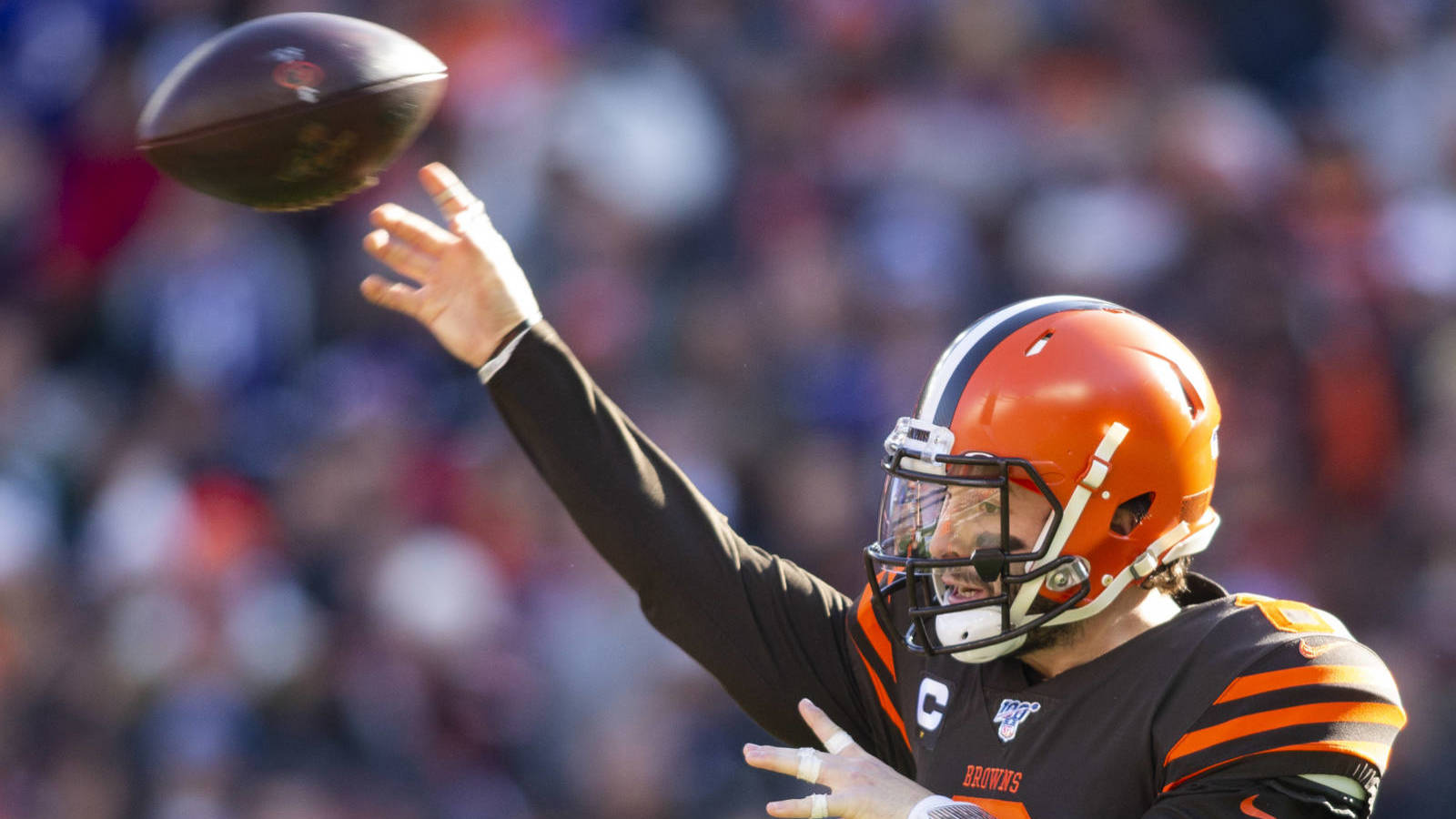
Cleveland Browns (6-10) | Roster rating: 6
TOP NEEDS: Tackle, safety, linebacker
ROSTER ANALYSIS: Not many positions require surefire upgrades, underscoring the Browns’ decision to fire Freddie Kitchens after wild underachievement. This dismal season has thrown QB Baker Mayfield’s trajectory off axis, minimizing the impact of rushing champion Nick Chubb, WR Jarvis Landry and, especially, WR Odell Beckham Jr. The Browns can start to pick up the pieces by identifying tackle upgrades. GM John Dorsey’s investments up front have underwhelmed. The Browns cut starting left tackle Greg Robinson before Week 1 and, evidently after Robinson drew no interest, re-signed him in a procedural move days later. Robinson and right tackle Chris Hubbard should be elsewhere next year; upgrades would go a long way toward revitalizing Mayfield. Cleveland may need to think bigger than LT Trent Williams (Redskins), whose current health should cause concern for potential buyers. Somehow, the franchise that gave two off-ball linebackers eight-figure-per-year deals in 2017 has a need here. Jamie Collins is long gone, and cap-casualty candidate Christian Kirksey has played in nine games over the past two years. LB Joe Schobert, whose 125 tackles are 53 more than any other Brown, is a free agent. So is top safety Damarious Randall. Still, this sub-.500 team has more upward mobility than most in similar positions. But this will be a pivotal offseason for a franchise in perpetual chaos.
PROJECTED 2020 CAP SPACE: $53.9 million
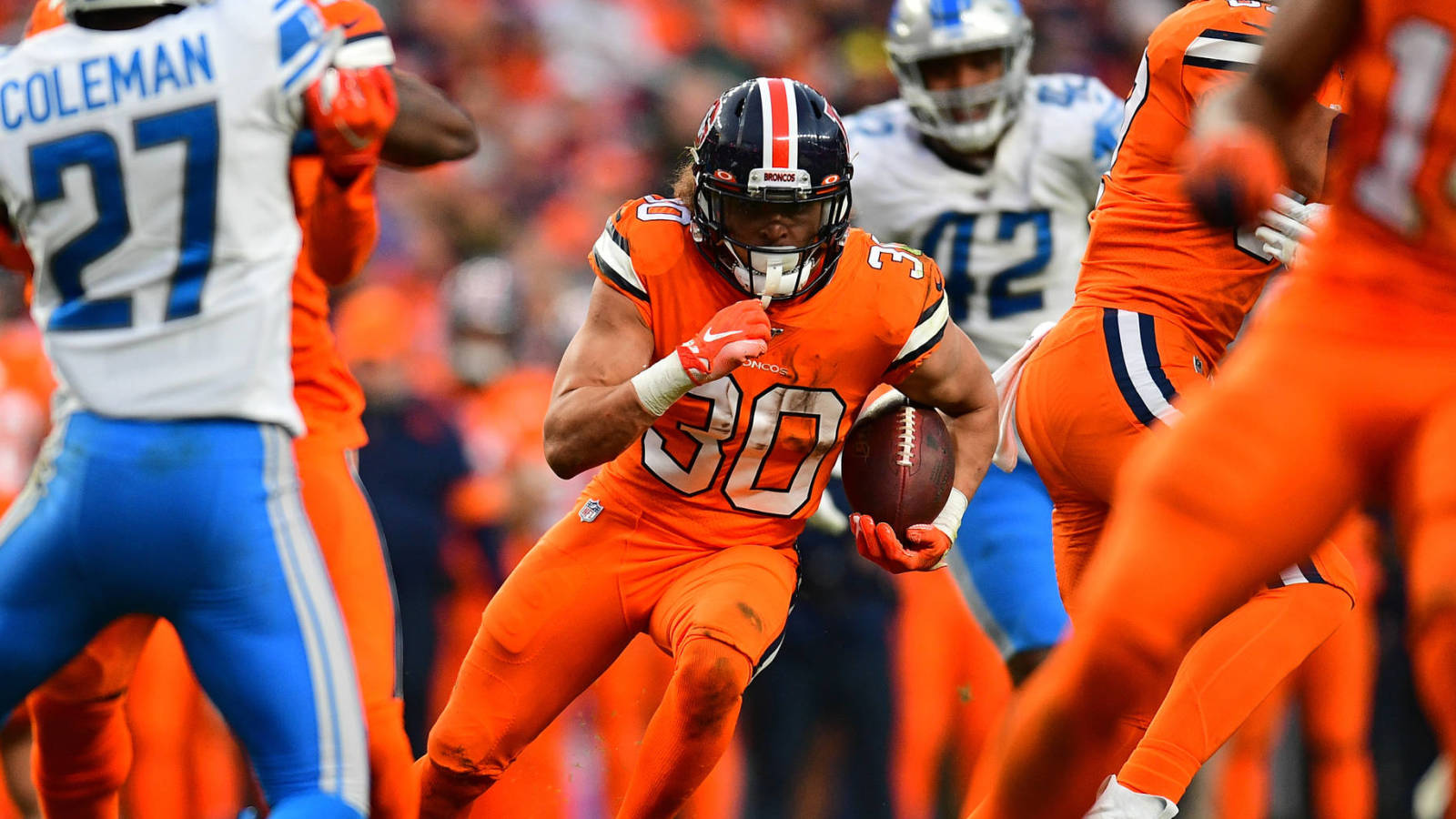
Denver Broncos (7-9) | Roster rating: 5
TOP NEEDS: Cornerback, offensive line, defensive end
ROSTER ANALYSIS: After a few shaky Denver drafts, the rookie classes of 2018 and ’19 produced OLB Bradley Chubb, WR Courtland Sutton, RB Phillip Lindsay, TE Noah Fant and QB Drew Lock – a badly needed young core. Denver will likely attempt to build around Lock instead of chasing another veteran quarterback to complement its Super Bowl 50 holdovers, as that group may only include OLB Von Miller next season. The Broncos face key decisions regarding their own free agents. GM John Elway identified breakout safety Justin Simmons as a top extension priority. But Super Bowl-era starters Chris Harris and Derek Wolfe, and productive multiyear first-stringers Shelby Harris and Connor McGovern, are set for free agency too. A four-time Pro Bowler who's traveled with No. 1 wideouts this season, Chris Harris leaving would create a glaring void at cornerback. Offseason addition Bryce Callahan addition played zero 2019 snaps due to a lingering foot injury, and the Broncos whiffed on third-round corners in 2017 and ‘18. The team will need to give Wolfe a third contract or Shelby Harris a second to avoid losing both defensive end starters. Denver should strongly consider an upgrade over left tackle Garett Bolles –- he of an NFL-most 32 holding penalties since 2017 –- and must decide on McGovern at center. Usually aggressive in free agency, Elway will also have seven draft choices between Rounds 1-4. One of those early picks will likely go toward a wide receiver to help a Sutton-dependent corps.
PROJECTED 2020 CAP SPACE: $67.5 million
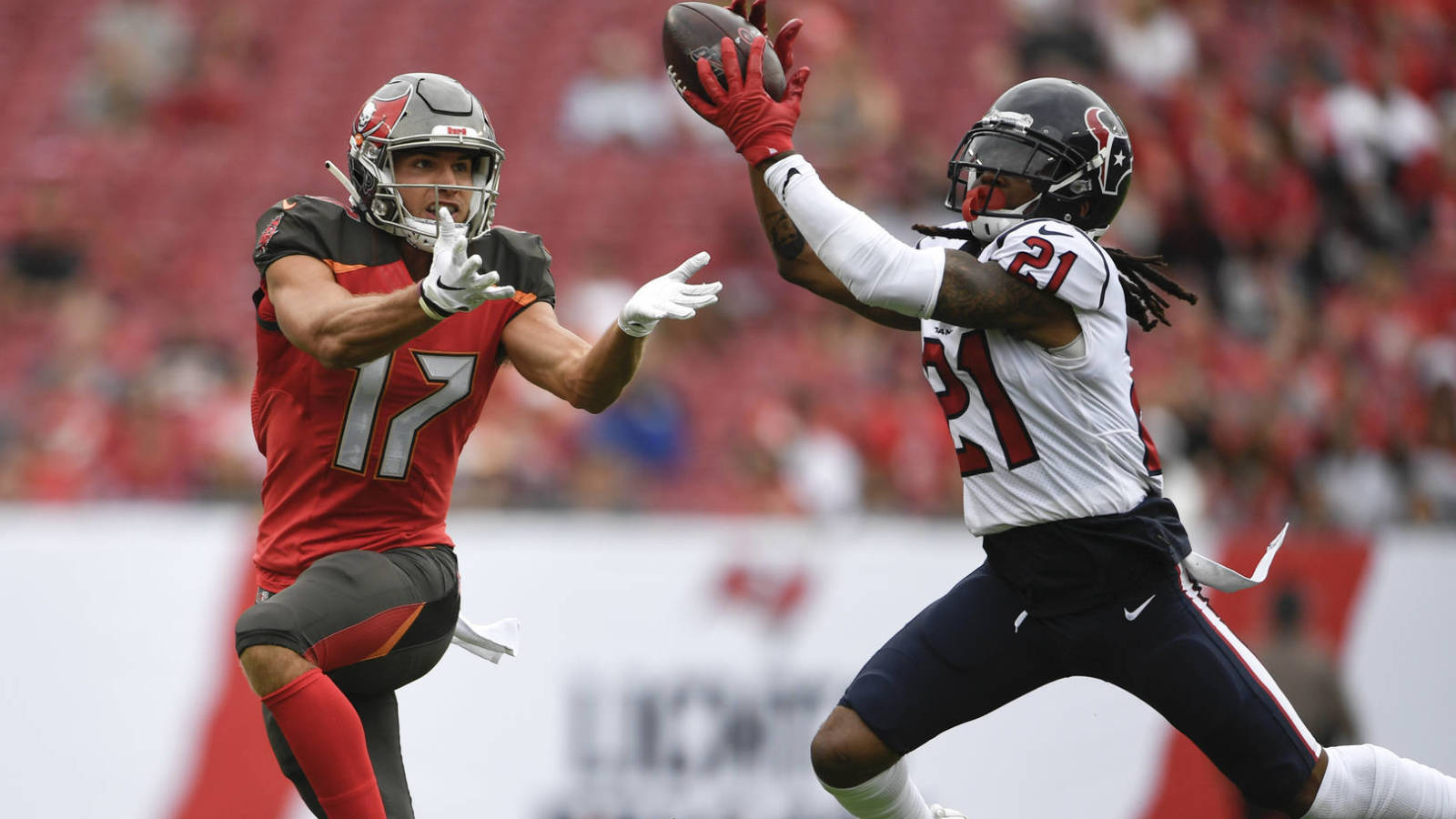
Houston Texans (10-6) | Roster rating: 6
TOP NEEDS: Edge defender, cornerback, running back
ROSTER ANALYSIS: Bill O’Brien outlasted both Rick Smith and Brian Gaine in Houston and, despite entering this season with a 42-38 record, obtained de facto GM power this year. O’Brien subsequently traded five first-, second- or third-round picks in the next two drafts. This will restrict the Texans’ ability to fortify their roster. So will the extension QB Deshaun Watson signs in 2020 or 2021. The best player in Texans history, J.J. Watt has now missed 32 games since September 2016. The Texans should not think about trading their superstar defensive end, but they can no longer rely on his availability. While Houston addressed key business by giving Watt wingman Whitney Mercilus another four-year extension, both will be north of 30 by Week 1 of 2020. With Jadeveon Clowney now in Seattle, Houston may need to add pass-rushing help in the draft to both groom for the future and serve as Watt insurance. Houston ranks 29th in pass defense and has top cornerback Bradley Roby, and longtime starter Johnathan Joseph, on expiring contracts. Second-round pick Lonnie Johnson’s rookie year has not gone well. The Texans do not have much draft capital to upgrade at either spot, so they will likely look to the market. Conversely, the team needs a young running back presence. Stopgap success story Carlos Hyde is a free agent-to-be and will be 30 next year. With the Texans set to leave their GM role vacant, an aggressive O’Brien-led March appears likely.
PROJECTED 2020 CAP SPACE: $74.3 million
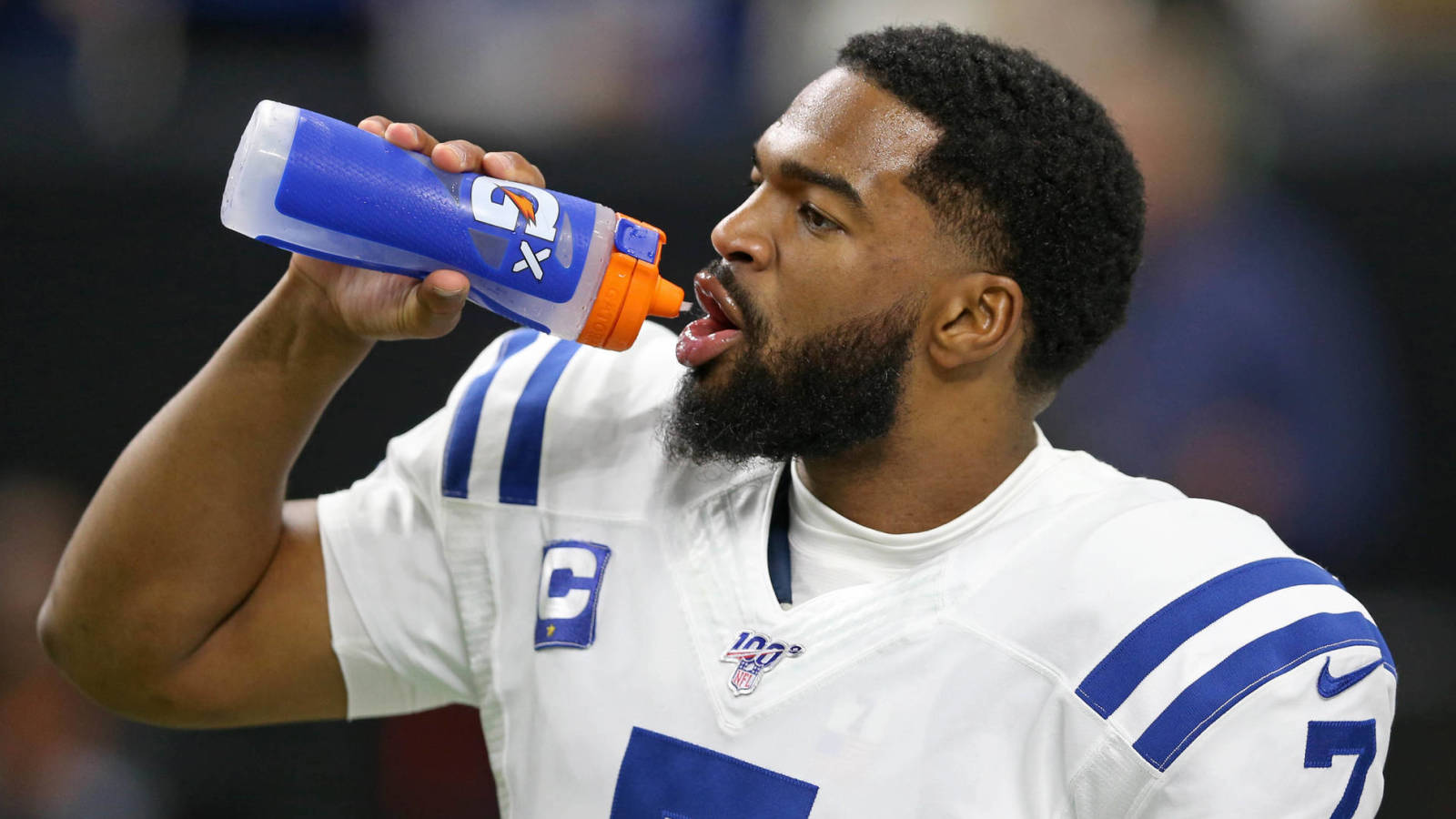
Indianapolis Colts (7-9) | Roster rating: 6
TOP NEEDS: Wide receiver, left tackle, edge defender
ROSTER ANALYSIS: Shoved down at least one AFC tier after Andrew Luck’s retirement, the Colts still have a quality roster. It just looks less capable without the Pro Bowl quarterback. In addition to evaluating an improved (pre-MCL injury) Jacoby Brissett, the Colts will need to address his weaponry. Given a one-year deal worth $10 million, WR Devin Funchess played in one 2019 game. T.Y. Hilton’s contract expires after 2020, and Indianapolis’ No. 1 wideout –- now 30 –- missed six games. The Colts need better support for Brissett. With the draft class expected to house superior options to the veteran market, wideouts should be a Colts consideration come April. Indianapolis holds two second-round picks. Anthony Castonzo’s contract is up, and if GM Chris Ballard intends to keep hoarding cap space, a second extension for the nine-year left tackle makes sense. Defensive end Jabaal Sheard’s deal is also expiring, and with 30-year-old Justin Houston on a two-year accord and injury-prone, the Colts should consider using some of their NFL-most cap space on a pass rusher. Jadeveon Clowney (Seahawks), Yannick Ngakoue (Jaguars), Bud Dupree (Steelers), Matt Judon (Ravens), Dante Fowler (Rams) and Arik Armstead (49ers) are due for free agency. Members of this group will make it to the market.
PROJECTED 2020 CAP SPACE: $98.7 million
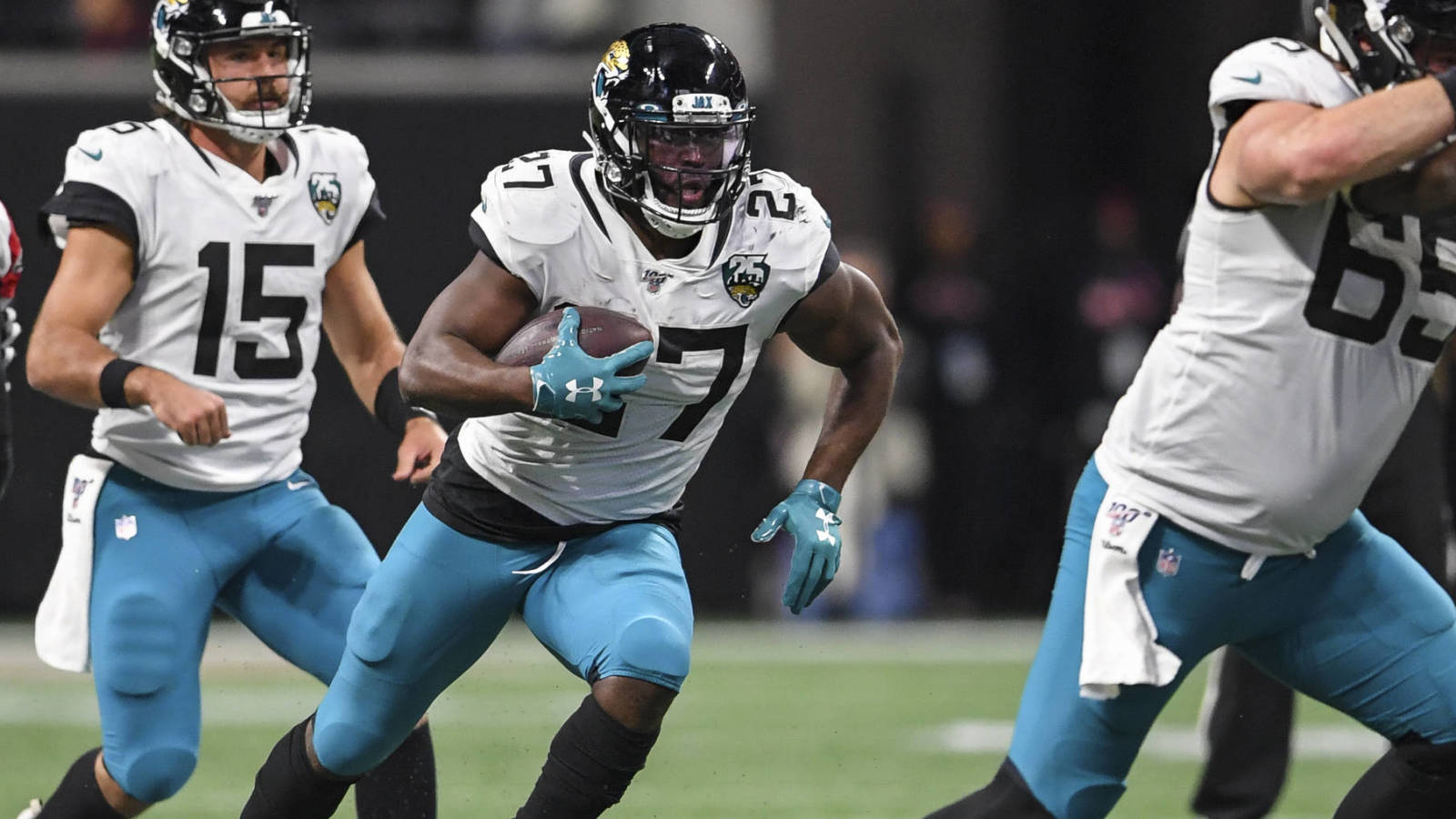
Jacksonville Jaguars (6-10) | Roster rating: 5
TOP NEEDS: Cornerback, tight end, edge defender
ROSTER ANALYSIS: Trending in the wrong direction since giving QB Blake Bortles a bizarre-in-the-moment extension, the Jaguars have many issues to resolve. Head coach Doug Marrone and GM Dave Caldwell surprisingly will be retained to solve them. Their quarterback situation is not promising, with Nick Foles again struggling away from Philadelphia and Gardner Minshew a sixth-round pick. Foles’ $15.1 million 2020 salary is fully guaranteed. While the Jags have extra 2020 and ‘21 first-round picks from the Jalen Ramsey deal, they are in a tough financial spot -– as one of three teams projected to be over the cap. Although Jacksonville is light on expiring contracts, DT Marcell Dareus’ $22.5M cap number looks likely to be removed from the books to free up $20M. The team needs another cornerback to replace Ramsey alongside A.J. Bouye. The team has also gotten next to nothing from its tight ends and could be in the mix for Austin Hooper (Falcons), Hunter Henry (Chargers) or Eric Ebron (Colts). (Though, the Jags’ last big tight end investment -– 2015’s Julius Thomas deal -– backfired quickly.) The Jaguars have DEs Calais Campbell and Josh Allen under contract, but the former will be 34 next year. Re-signing or franchise-tagging impact rusher Yannick Ngakoue will be important long term, though Allen’s presence gives the franchise some security in the event it balks at Ngakoue’s price.
PROJECTED 2020 CAP SPACE: $972,000 over the cap
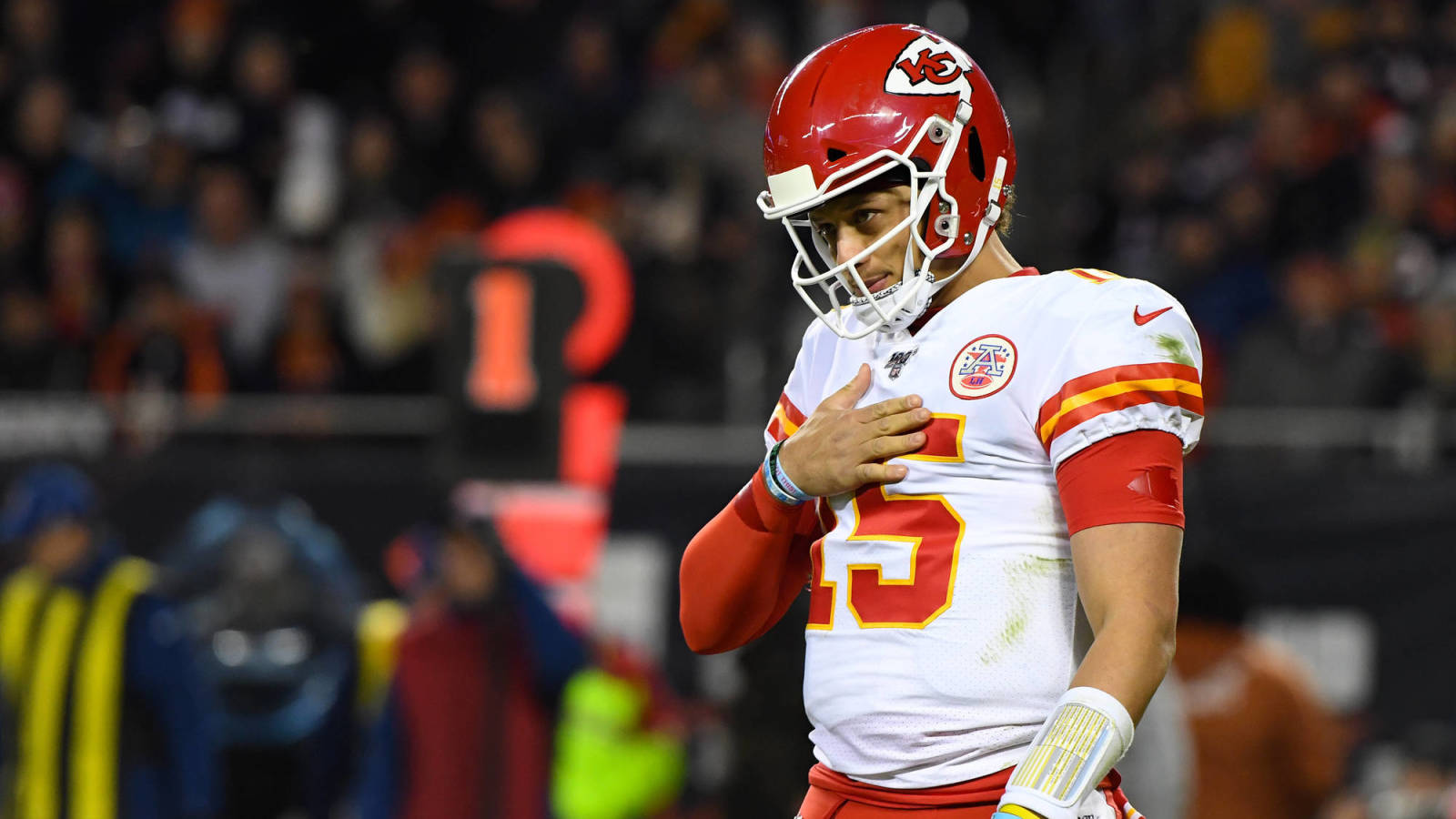
Kansas City Chiefs (12-4) | Roster rating: 8
TOP NEEDS: Defensive tackle, cornerback, running back
ROSTER ANALYSIS: Blessed with the NFL’s most talented quarterback, the Chiefs rocketed from second-tier contender to Super Bowl threat since giving the keys to Patrick Mahomes. The harder part of this equation could start in 2020, when Mahomes becomes eligible for a market-shifting extension. That will limit the team’s ability to dole out the kind of contracts it has to the likes of safety Tyrann Mathieu and WR Sammy Watkins. Among their free agents, the Chiefs’ top priority will be retaining impact DT Chris Jones. Jones, who has the most consecutive games with a sack in NFL history, will command closer to Aaron Donald money ($23 million per year) than the $17.1M-average annual Fletcher Cox rate. A Jones tag would cost roughly $16.7M. The Chiefs can shed their ill-advised Watkins contract, saving $14M, to address more pressing issues. Kansas City has also deployed a top-10 DVOA pass defense without a big-name cornerback, though Charvarius Ward has grown into a full-time starter. But with slot man Kendall Fuller’s deal expiring, the team needs multiple pieces here. The Chiefs have yet to replace RB Kareem Hunt. Damien Williams is not on the ex-rushing champion’s level; LeSean McCoy is a stopgap. While it’s possible Darrel Williams or Darwin Thompson could start on the cheap, the Chiefs will be candidates to add a better option in the draft.
PROJECTED 2020 CAP SPACE: $21.9 million
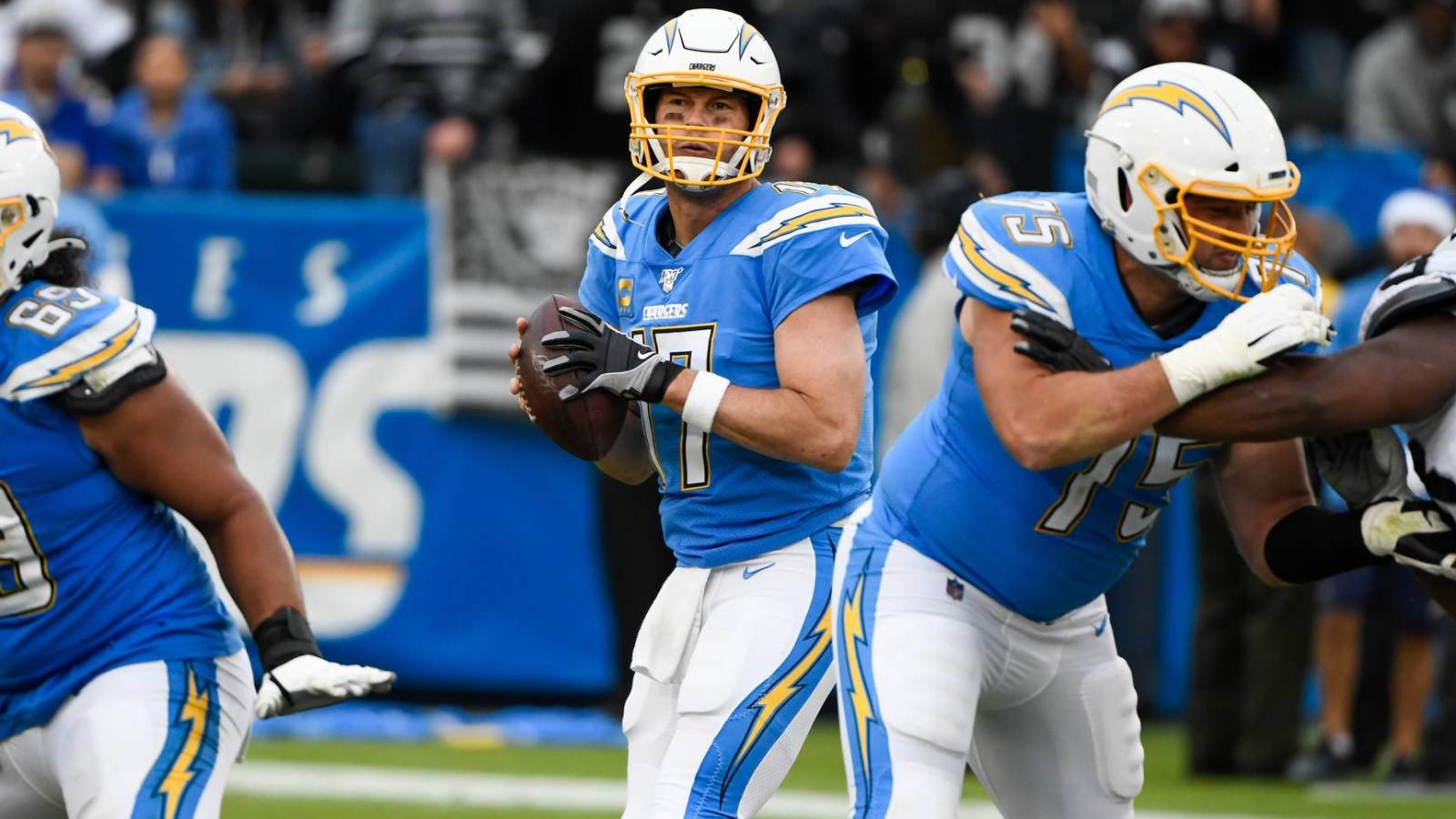
Los Angeles Chargers (5-11) | Roster rating: 5
TOP NEEDS: Quarterback, offensive line, tight end
ROSTER ANALYSIS: The Bolts are set to move into a new stadium as an undesirable commodity, and the issue the franchise tabled for years has become a red-alert concern thanks to QB Philip Rivers’ decline. The Chargers resisted drafting Rivers’ heir apparent in recent years but has the No. 6 pick in 2020. That could well be enough to grab the third-best quarterback prospect. Rivers wants to return, but will giving him another franchise-quarterback extension going into a season in which the San Diego resident turns 39 be appealing? Perhaps as a bridge option, but the team needs to find its next starter soon. Injuries to veteran acquisitions and an inability to develop reliable starters in recent years places Los Angeles’ offensive line in flux. Russell Okung and Mike Pouncey will be 33 and 31, respectively, next year after injury-marred seasons. Right guard Michael Schofield is a free agent, and the Bolts have not found a right tackle post-Joe Barksdale. The Chargers employ a vaunted skill-position corps for one more game, but TE Hunter Henry and RB Melvin Gordon are free agents. Despite Gordon’s two Pro Bowls, Austin Ekeler’s presence makes running back a lesser issue than tight end. Although Henry’s experienced injury trouble, the Bolts not re-signing or franchise-tagging their Antonio Gates successor will create a major need. A tight end tag is expected to cost nearly $11 million.
PROJECTED 2020 CAP SPACE: $58.2 million
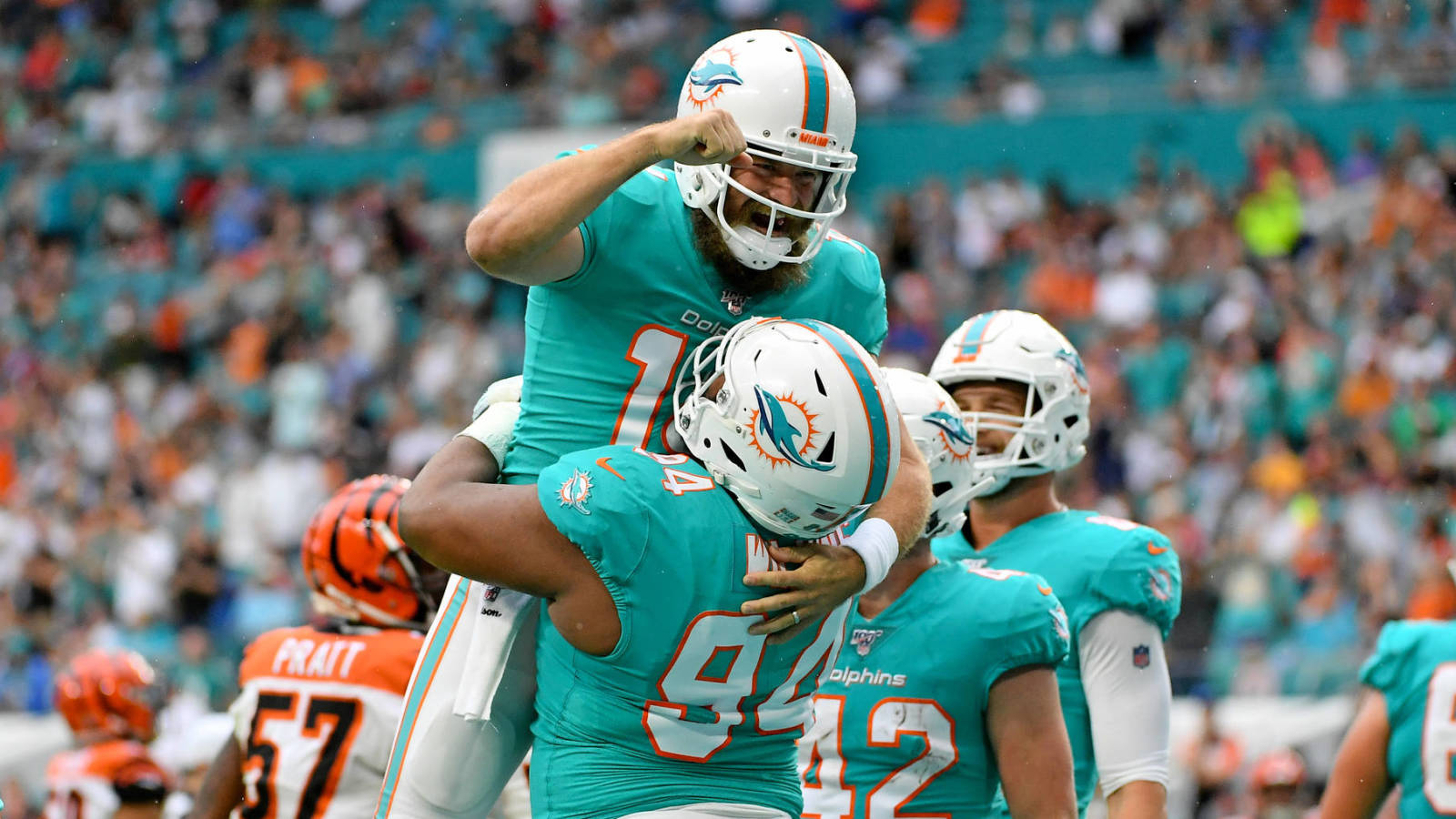
Miami Dolphins (5-11) | Roster rating: 2
TOP NEEDS: Quarterback, offensive line, edge defender
ROSTER ANALYSIS: Although the better discussion would be to identify the positions that do not profile as needs, the aggressively rebuilding Dolphins planned for this. They may hold more than $100 million in 2020 cap space by March and currently have five picks in the draft’s first two rounds. The Chris Grier-led front office’s maneuvering has centered on acquiring the franchise’s next long-term quarterback. Its top first-round pick will be fifth overall, a sufficient place to draft either Alabama QB Tua Tagovailoa or Oregon signal-caller Justin Herbert,. The Dolphins also have the Steelers’ and Texans’ first-rounders as ammo in case they need to move up for one of these passers. The new QB will need more than the sub-replacement-level offensive line Ryan Fitzpatrick had. The Dolphins will be in the market for upgrades in free agency and the draft, where their top-tier capital can outflank other blocker-needy teams. With Miami rating as DVOA’s worst pass defense, top Dolphin Xavien Howard will have new sidekicks at cornerback next season. The team also needs help on the edge. Taco Charlton registered five sacks since being added via waiver claim, but no other Dolphin defensive end had more than 1.5 this season.
PROJECTED 2020 CAP SPACE: $97.8 million
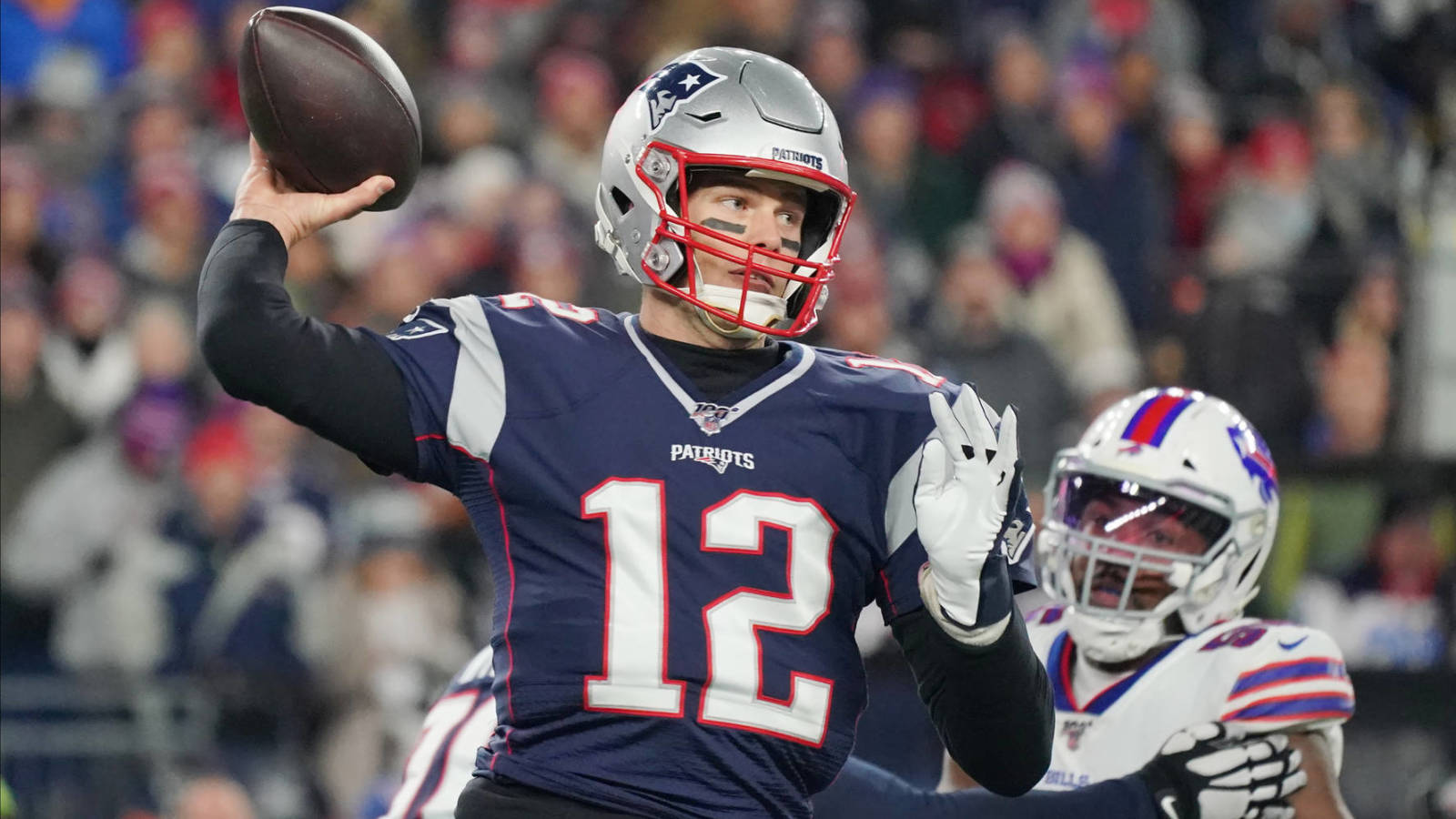
New England Patriots (12-4) | Roster rating: 6
TOP NEEDS: Quarterback, tight end, edge defender
ROSTER ANALYSIS: Tom Brady leaving the Patriots’ friendly confines and starting over elsewhere at age 43 still seems unlikely. But this offseason brings uncharted territory for this century’s premier franchise. With the opportunity to be a first-time free agent, Brady can explore his options. His 2019 restructure prevents the Patriots from using their franchise tag on him. Following the October 2017 Jimmy Garoppolo trade, the Pats have relied on their age-defying passer to stay healthy. Brady has, but his play has declined -– as the Patriots’ post-Rob Gronkowski offense lacks a certain dimension. With the Pats dealing their second-round pick for WR Mohamed Sanu, they are limited in how they can add a Brady successor, pointing to the sides working something out for 2020. The Patriots’ low-end Gronk replacements have struggled. Next year’s free-agent crop could include Eric Ebron (Colts), Austin Hooper (Falcons) and Hunter Henry (Chargers). Each would be a massive upgrade and bailout for the 11-time reigning AFC East champions. Scouts Inc. grades only one tight end among its top 70 prospects for 2020. Kyle Van Noy and Jamie Collins, New England’s top two sack artists, are free agents. The team has prioritized cover men over edge defenders in recent years, but it would be surprising if at least one of the Collins-Van Noy tandem does not return. Neither has excelled outside New England.
PROJECTED 2020 CAP SPACE: $49 million
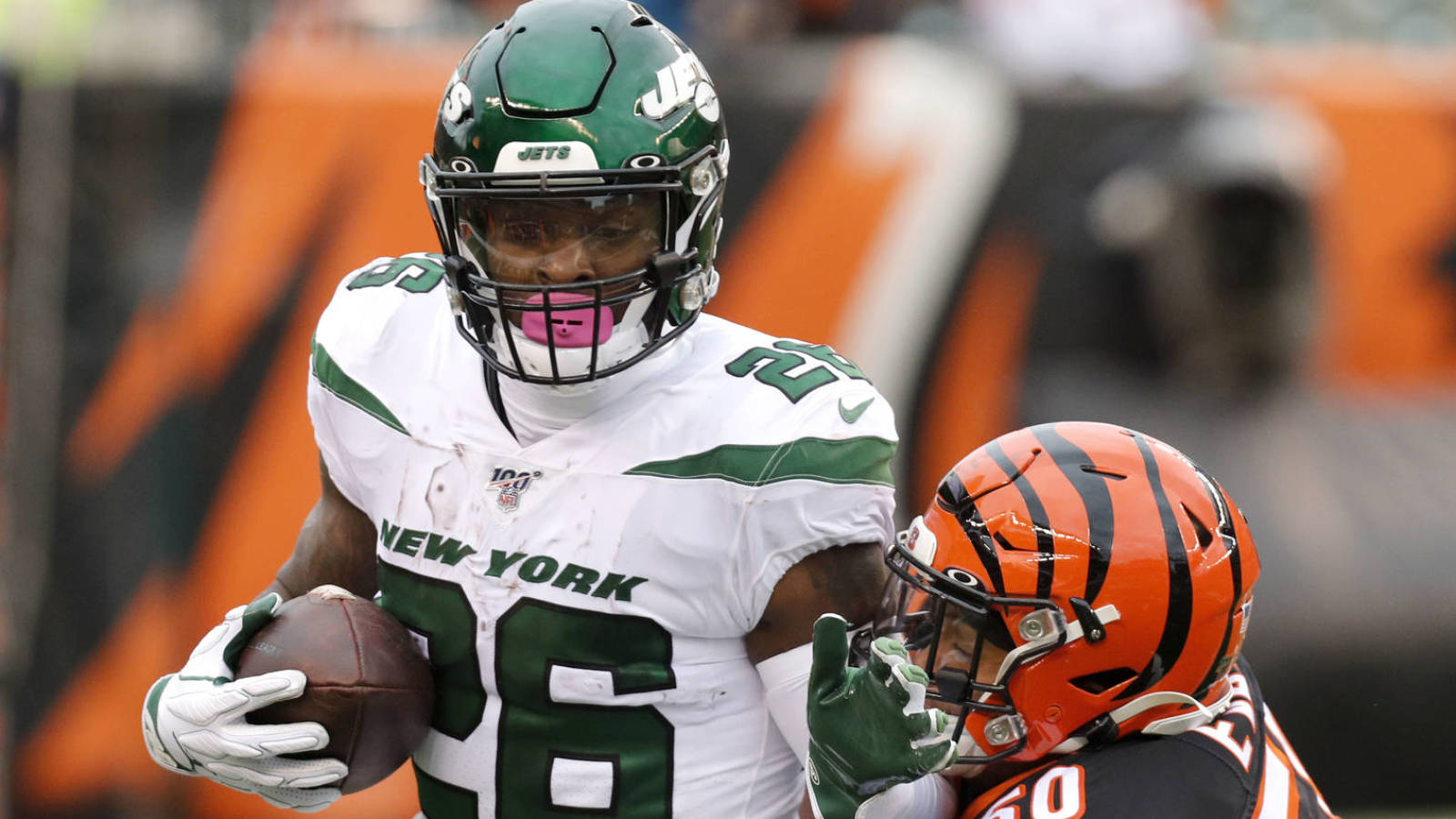
New York Jets (7-9) |Roster rating: 4
TOP NEEDS: Offensive line, cornerback, edge defender
ROSTER ANALYSIS: Earlier this year, the Jets reset the off-ball linebacker market and gave a top-tier deal to a running back Adam Gase did not appear to covet. C.J. Mosley missed most of this season, and Le’Veon Bell experienced his worst year as a pro. Despite since-fired GM Mike Maccagnan’s big spending, the Jets have several needs. Their Week 1 offensive line may all be with other teams or out of the league by Week 1 2020. The Jets encountered rampant injury issues up front this season, which has produced yet another basement-level O-line. New GM Joe Douglas will target improvements at nearly every spot. A similar talent void exists at cornerback, where 2018 Maccagnan investment Trumaine Johnson will be released despite a $12 million dead-money hit. Quality slot corner Brian Poole is a free agent, and the Jets may need two boundary starters as well. The Jets have chased edge rushers for years. They came up short on Khalil Mack in 2018 and their 2019 Anthony Barr experiment ended after he backed out of a 2019 agreement. OLB Jordan Jenkins, the only Jet front-seven player with more than two sacks this season, has recorded 14 over the past two years. The 2016 third-rounder is a free agent, creating another position with multiple needs.
PROJECTED 2020 CAP SPACE: $61.5 million
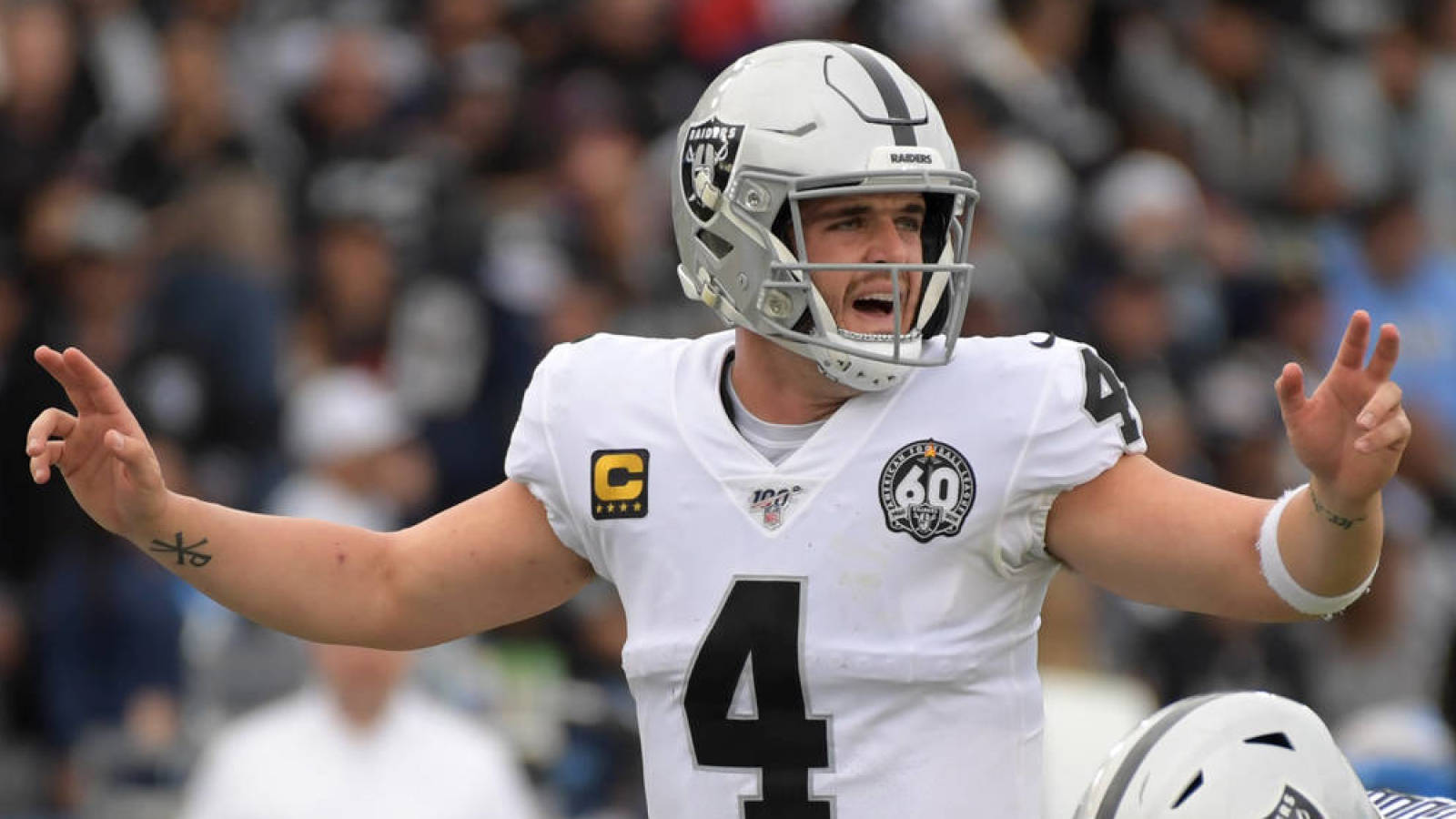
Oakland Raiders (7-9) | Roster rating: 5
TOP NEEDS: Linebacker, cornerback, wide receiver
ROSTER ANALYSIS: Although the Raiders entered Week 17 with playoff hopes, they finished with a minus-106 scoring differential. They are still rebuilding and need more help defensively. The Raiders’ second Oakland exit will come after a 17-year run as a below-average scoring defense; this one rates as DVOA’s No. 31 unit. Even before Vontaze Burfict’s suspension, the Raiders lacked a plan at linebacker. They have not used anything higher than a third-round pick on a linebacker since 2010’s disastrous Rolando McClain first-round investment. Either that changes, or the Raiders go for a younger off-ball ‘backer in free agency. The Rams’ Cory Littleton profiles as such a free agent. Second-round pick Trayvon Mullen will be a 2020 starter at corner, but the Raiders need to give him a running mate after trading Gareon Conley. As of now, 2020 presents a strong cornerback market. Tyrell Williams was signed to be a No. 2 wideout, so naturally the Raiders’ passing attack absorbed a crushing blow when Antonio Brown predictably burned the franchise. Hunter Renfrow became an answer in the slot, but the Raiders -– who will hold two mid-first-round picks -– will be a candidate to take one of the many impact wide receiver prospects in Round 1. If Jon Gruden does not pull off something unexpected to upgrade on Derek Carr, the mid-tier passer needs another weapon.
PROJECTED 2020 CAP SPACE: $70.9 million
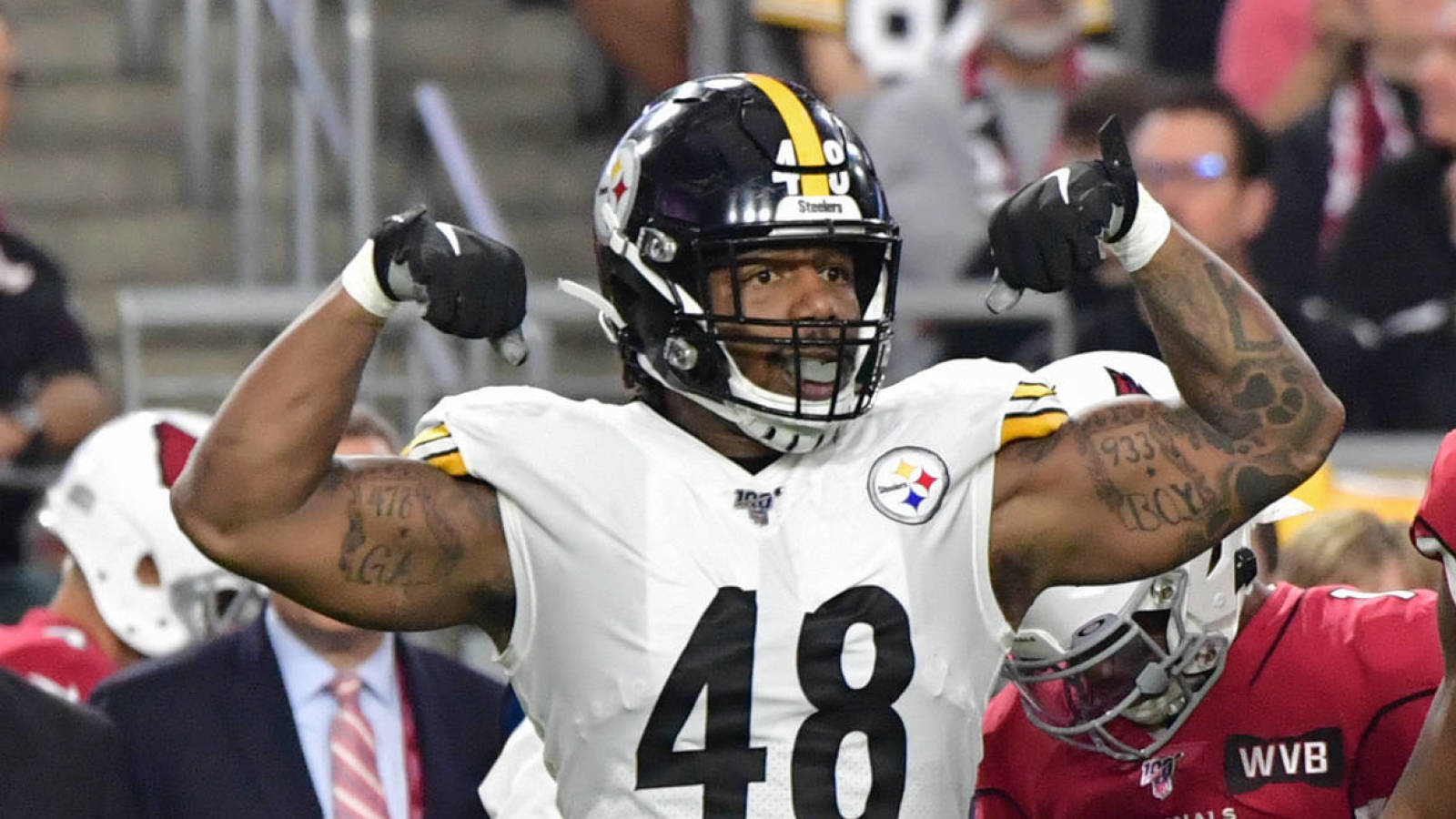
Pittsburgh Steelers (8-8) | Roster rating: 7
TOP NEEDS: Edge defender, nose tackle, quarterback
ROSTER ANALYSIS: The Steelers are in relatively good shape, despite a season unfolding almost entirely without their “Killer B’s” crew. Frequently choosing to restructure contracts to create cap space, the franchise may need to go to that can-kicking well again. They would possess insufficient funds to use their franchise tag on Bud Dupree, with the linebacker tag expected to cost approximately $16 million. A Dupree extension could be dicey, with a monster contract likely coming in 2021 for OLB T.J. Watt. Dupree’s inconsistency before his 10.5-sack 2019 places his stock in a curious place, but without a tag, Pittsburgh will likely lose the 2015 first-rounder in free agency. Nose tackle Javon Hargrave is also a threat to leave, especially with the Steelers having given defensive linemen Cam Heyward and Stephon Tuitt lucrative extensions. Ben Roethlisberger’s situation hovers over all of this. The quarterback has vowed to return, but he’s recovering from a major injury and will also be 38. The Steelers traded their first- and third-round picks for defensive starters this year, so they may have to push their need for a Roethslisberger successor into 2021 and hope the future Hall of Famer can give them another year. If Big Ben is close to his previous version, the defensively remodeled Steelers will be a title contender next season.
PROJECTED 2020 CAP SPACE: $6.1 million
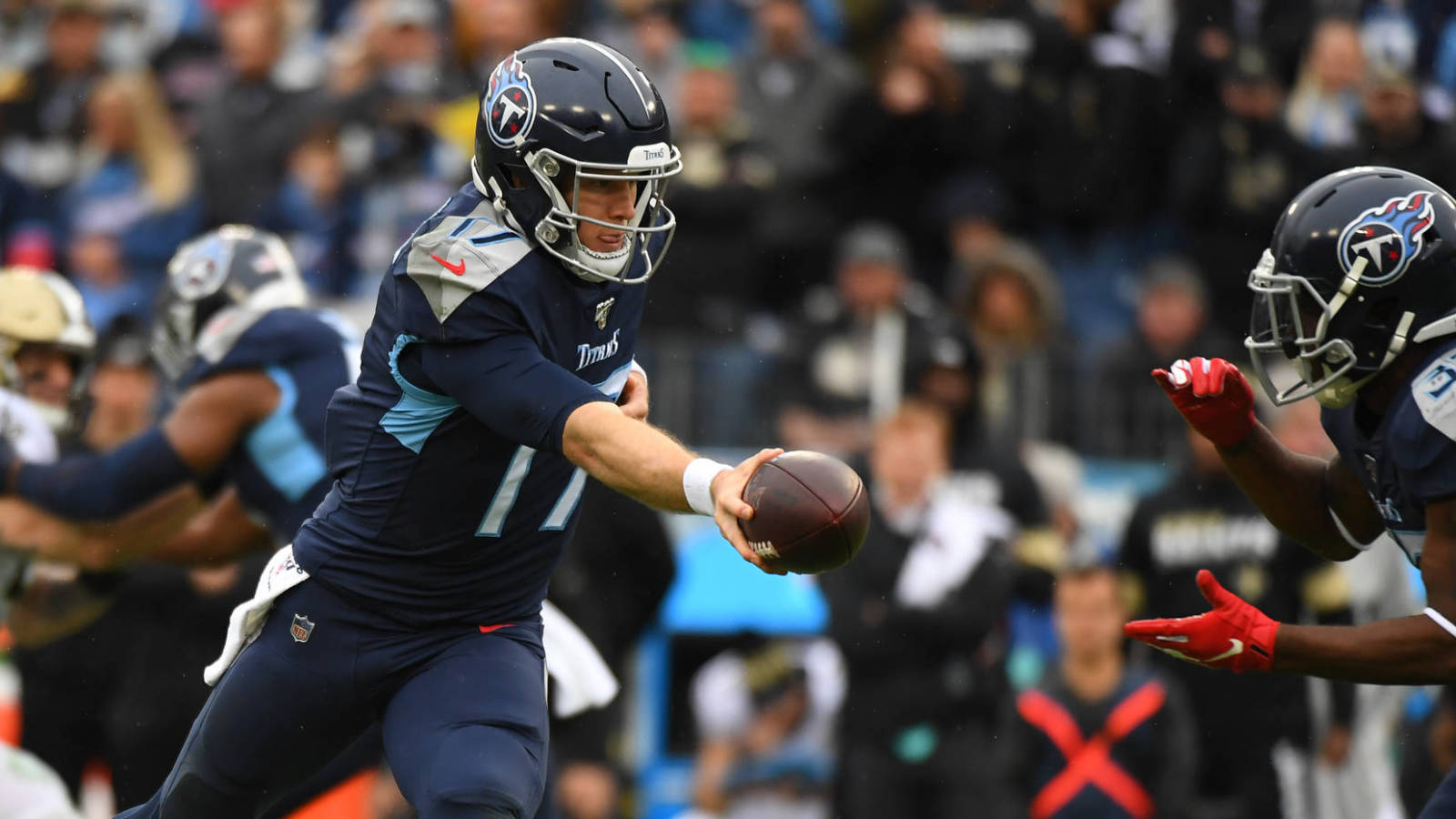
Tennessee Titans (9-7) | Roster rating: 5
TOP NEEDS: Quarterback, running back, edge defender
ROSTER ANALYSIS: QB Ryan Tannehill has gone from oft-injured Dolphins starter to Titans franchise tag candidate. The eighth-year veteran has delivered the best Titans passing work since prime Steve McNair and has steered them to a spot as a dangerous No. 6 seed. The Titans have their offensive centerpieces, Tannehill and RB Derrick Henry, on expiring deals. Both need to be brought back. The final year of a collective bargaining agreement stipulating teams can use franchise and transition tags would come in handy for Tennessee, which has a unique asset in Henry. The old-school runner does not fit the profile of a back capable of commanding high-end money, but he is immensely valuable to the Titans. They cannot risk losing him. That may mean losing right tackle Jack Conklin, a four-year starter and free agent after Tennessee passed on his fifth-year option. The Titans did well in selecting Harold Landry in the 2018 second round but could use a wingman for an edge rusher who is by far the team’s top sack artist. The Titans are in better shape than they were after Mike Vrabel’s first season. How they handle their extensions will determine their 2020 viability.
PROJECTED 2020 CAP SPACE: $48.3 million
More must-reads:
- NFL teams that have made three or more first-round picks in one draft
- Super Bowl game time, TV
- The 'Most sacks in a season for every NFL team' quiz
Breaking News
Trending News
Customize Your Newsletter
 +
+
Get the latest news and rumors, customized to your favorite sports and teams. Emailed daily. Always free!








